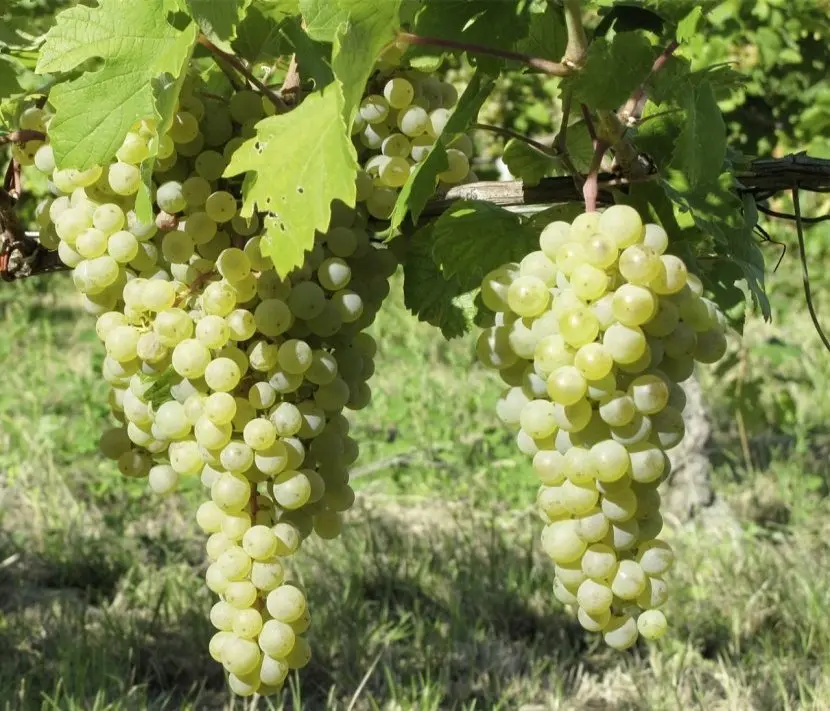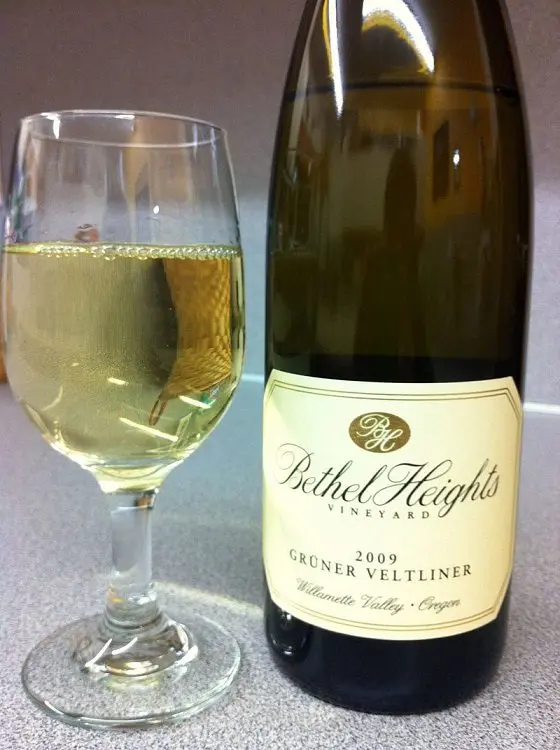Wine Grüner Veltliner (Grüner Veltliner) – a visiting card of Austria in the international market. This is a dry white wine of high acidity, which is called a high-quality and fairly budget alternative to Chardonnay and Sauvignon Blanc.
The name of the wine is difficult to pronounce, so in everyday life it is often reduced to Gru-Ve (Gru-Ve) or even Groovy (Gruvy). “Gruner” means “green” and refers to both the color of the grapes and their fresh, herbal flavor. ‘Veltliner’ is the common name for a family of varieties, such as ‘Pino’ or ‘Muscat’.

Veltliner literally translates as “from Veltlin”. Veltlin is an area in the Alps that is now part of Italy.
History
It is believed that the variety has been growing in Austria since Roman times, but its first official mention is found only in 1855. It is possible that Gru-Ve was previously known as Weißgipfler.
Until the 1940s, Grüner Veltliner was an unremarkable autochthonous Austrian variety. It took many years of selection for this grape to acquire its characteristic features and become truly popular.
Gru-Vet attracted particular interest in 2002, when it overtook white Burgundy wines labeled Grand Cru in a blind tasting.
Origin of the variety
In 2007, a DNA test confirmed that the variety is a natural cross between Savagnin (Traminer) and an autochthonous, almost extinct Austrian St. Georgener-Rebe, growing in the eastern part of the country near the village of Sankt Georgen.
Although this variety is also known as Grüner Muskateller, it has nothing to do with the Muscat family.

Regions of wine production
The best vineyards are located along the Danube, in the regions of Wachau (Wachau), Kremstal (Kremstal) and Kamptal (Kamptal). Local wineries are located on steep slopes with rocky soils. As a result, the berries produce a clear, light-colored juice that acquires distinct mineral notes during fermentation and is well suited for long oak aging.
In Poysdorf, a light sparkling wine is produced from this grape variety. In small quantities, Gruner is also cultivated in Italy, the USA, New Zealand, Germany, Australia, the Czech Republic and Slovenia.
Grüner Veltliner vines occupy almost 33% of all Austrian vineyards. This is the most popular variety in the country.
When preparing wine, Grüner Veltliner can either be a monosort or be blended with Riesling, Pinot Blanc and Chardonnay.

Wine characteristics
Gruner Veltliner has a citrus aroma with notes of lemon peel, lime and grapefruit, nuances of drupe, fresh herbs, white pepper, nectarine. In addition, this wine is famous for its high acidity, which, depending on the aging of the drink, can quickly pass or remain in the aftertaste for a long time.
There are two main styles of Gru-Ve:
- Steinfeder or Spring game. Light-bodied, young, fresh wine with mineral and citrus tones. Often slightly carbonated. Typical representative: brand Leth Grüner Veltliner.
- Emerald. A more complex and full-bodied wine with spicy notes and a creamy texture. Before being sold, it is aged in oak for several years, and then it still ripens in the bottle, which is why it often comes to the shelves with the Reserve mark. Typical representative: brand “Lamm” Hirsch Grüner Veltliner.
The wine has a rich golden-straw color and a deep fruity aroma. After aging in an oak barrel, it acquires honey and jam notes, a slightly nutty flavor.

How to drink
Gruner Veltliner wine is cooled to +7 ° C before serving; on a hot summer day, it does not hurt to place the bottle in a container with ice. Gruner goes well with light salads and vegetables. More full-bodied and spicy variations can be served with ratatouille, tuna, Wiener schnitzel.
Austrian chefs recommend eating Grüner Veltliner with spicy dishes, as the acidity of the wine sets off the spices well. Also, this drink is a successful gastronomic pair with soft and goat cheese, asparagus, artichokes, spinach, broccoli, seafood.
This wine can be found in the wine list of almost any restaurant, as it does not have strict gastronomic inconsistencies: worse or better, but it goes well with the vast majority of dishes.









